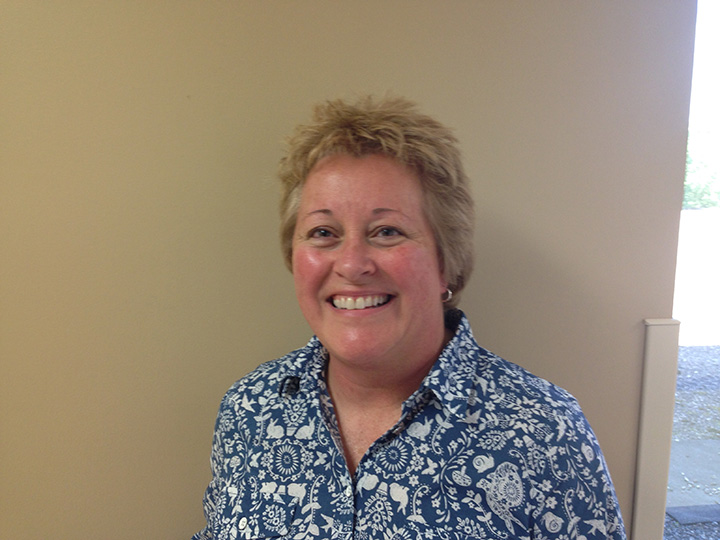By Mark Ambrogi

Rhonda Walls’ tremors had gotten so bad she thought she might have to leave her job as Carmel’s University High School assistant athletic director.
The right-handed Walls has had essential tremor since her 20s, but it had gotten significantly worse the past two years.
“I was to the point I was writing with my left hand which wasn’t working out very well,” said the Zionsville resident, whose husband, John, is the University athletic director. “I shook too bad to even drink from a glass. I was at the point where I thought ‘Do I quit my job and go on disability?’ I didn’t want to do that. I’m 53 years old and hope I got a few years left.”
That all changed when Walls had a procedure by Medronic called Deep Brain Stimulation Therapy, which is used for patients with advanced Parkinson’s disease, essential tremor and cervical dystonia.
Dr. Albert Lee, a neurosurgeon with the Goodman Campbell Brain and Spine at St. Vincent Indianapolis, is one of a select group of physicians trained in the procedure. The procedure has been done for more than 25 years, but the patient had to be awake with a frame around their head.
“We didn’t have modern technology to keep the patient safe,” Lee said.
Now they do. This two-stage procedure was developed five to seven years ago.
“It’s really picked up steam every year,” Lee said. “We believe it’s going to be the dominant way this procedure is done.”
Dr. Lee became the first to perform the procedure in Indiana while the patient is asleep in 2014.
During the surgery, electrodes are implanted within the brain to deliver electrical impulses. The electrode implanted in the brain emits pulses of energy to block the abnormal activity in the brain which causes the symptoms of movement in neurological disorders.
Walls had her procedure done in March. Walls was referred by Dr. Michael Sermersheim, a neurologist with Josephson Wallack Munshower Neurology at St. Vincent.
“My quality of life has improved so much,” Walls said.
The medical device, similar to a pacemaker, is inserted to deliver electronic stimulation to precisely targeted areas of the brain to reduce some of the most disabling motor symptoms such as shaking, stiffness and movement difficulties. Lee said patients call it a GPS for their brain.
Walls gets a quick reminder of what her life was like before by turning off the device for a demonstration. When she does her hands immediately shake when she goes to lift a glass. She does turn the device off when sleeping at the suggestions of the doctors.
“It sort of resets your brain and it works better,” Walls said. “It helps the battery life.”
Lee said the battery life depends on how advanced the person’s disease is and how much power needs to be delivered to treat that disease. It typically last three to four years.
Sermersheim said the deep brain surgery is effective and beneficial to so many people.
“To see the impact it has on a patient’s life is so immediately rewarding,” Sermersheim said. “It’s not like anything I experienced in anything in medicine.”
Sermersheim said when patients are given the option they always choose to be asleep.
“The risks are real, this is brain surgery and you can’t sugarcoat that fact,” Sermersheim said. “But it’s not scary and not uncomfortable and we don’t want people’s fear to keep them from having a much more fulfilling life.”



